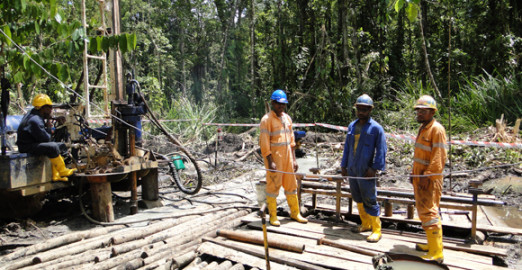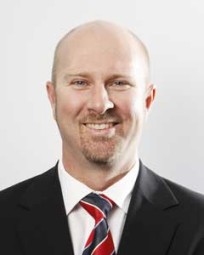Australian-based Kula Gold says the granting of a mining lease to develop its Woodlark Island Gold Project is a ‘milestone’, for both itself and the Papua New Guinea Government. The next step is to confirm financing for the project, Kula’s Chief Executive Officer Stuart Pether tells Business Advantage PNG.

Exploratory drilling on Woodlark Island. Credit: Kula Gold
It has been eight years since the PNG Government last issued a gold mining lease.
‘The last onshore mining lease was Hidden Valley Joint Venture in Morobe Province, granted in April 2005, says Greg Anderson, Executive Director of the PNG Chamber of Mines and Petroleum.
‘We are really, really excited to get the mining lease. It has been a very rigorous process over the last 18 months and it does demonstrate that, even if you are a small company with limited resources, you can achieve the things you want to achieve in PNG,’ Stuart Pether tells Business Advantage PNG.
While it has taken 18 months to get the lease approved, Kula Gold has been carrying out exploration on Woodlark Island, about 250 kilometres east of Alotau, on the east coast of the mainland in Milne Bay, for the last eight years.
Debt and equity
Financing is the next stage, Pether says.

Kula Gold’s Stuart Pether
‘Based on the gold price, the level of hedging, and detailed due diligence, the company believes we should be able to get somewhere between 50 to 70 per cent debt, and the rest will need to be equity.
‘I would suggest at today’s gold price it’s probably more likely to be 50/50, so we are looking at somewhere around $A80 million worth of debt and $A80 million worth of equity to get the project underway.’
The government has the right to acquire up to 30 per cent of the project, and Pether is waiting to hear how much the O’Neill government will contribute, via its investment vehicle, Petromin Holdings.
‘It’s not a free carry. They would have to pay sunk costs of the project to date and be contributing going forward,’ says Pether.
Nine-year mine life
A feasibility study in Sept 2012 estimated the mine has about 2.1 million ounces of Mineral Resources and 766,000 ounces of ore reserves, with a life of about nine years.
‘The project is economic at today’s gold price (US$1306 per ounce, at the time of writing) and we are confident the outlook for the gold price is positive.’
‘The MoA makes a commitment to employ Woodlark Island people first, Milne Bay people second, then the rest of PNG, and then expats as required.’
The Memorandum of Agreement (MoA), which describes the sharing of benefits between all the stakeholders, indicates the Woodlark Island landowners and the Milne Bay provincial government will take at least five per cent, he says.
Once the financing is in place, a 24- to 28-month construction period begins until the first gold pour.
Remote location
Mining on remote locations like Woodlark Island presents its own challenges—the need to be self-sufficient in power supply, for example. But, says Pether, there are also advantages.
‘We have a deep water port only about seven kilometres from the processing site. The terrain is fairly benign and is not particularly mountainous.
‘The highest point is only about 480 metres and predominantly the island is reasonably flat, so the construction of roads and access to the plant is quite easy.’
Locals will take priority for the 500 jobs on offer when production is up and running, although Pether expects about 150 will be PNG nationals and expatriates with specialist skills.
‘The MoA makes a commitment to employ Woodlark Island people first, Milne Bay people second, then the rest of PNG, and then expats as required. Our business plan includes identifying opportunities for local people and suppliers, which are sustainable and deliverable.’








Speak Your Mind